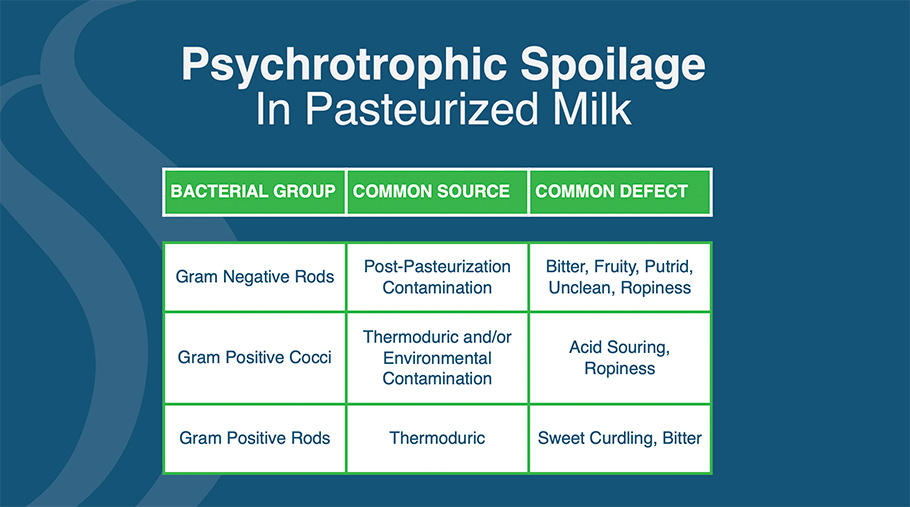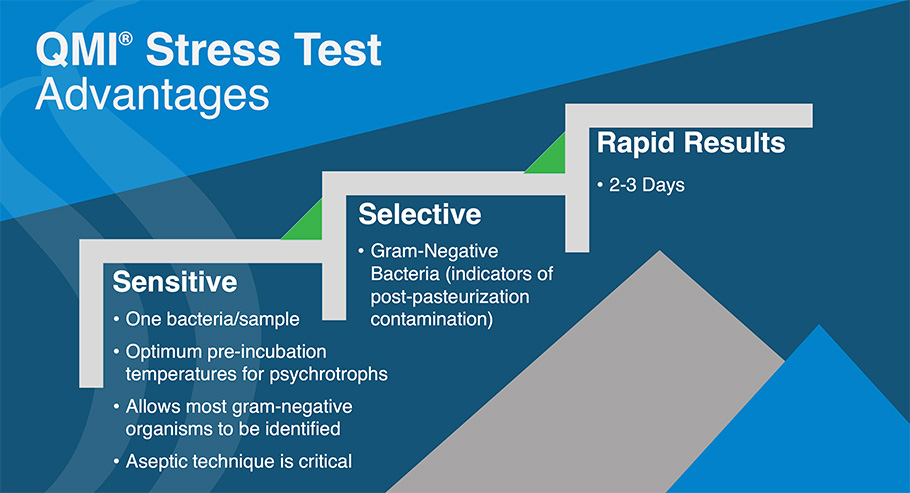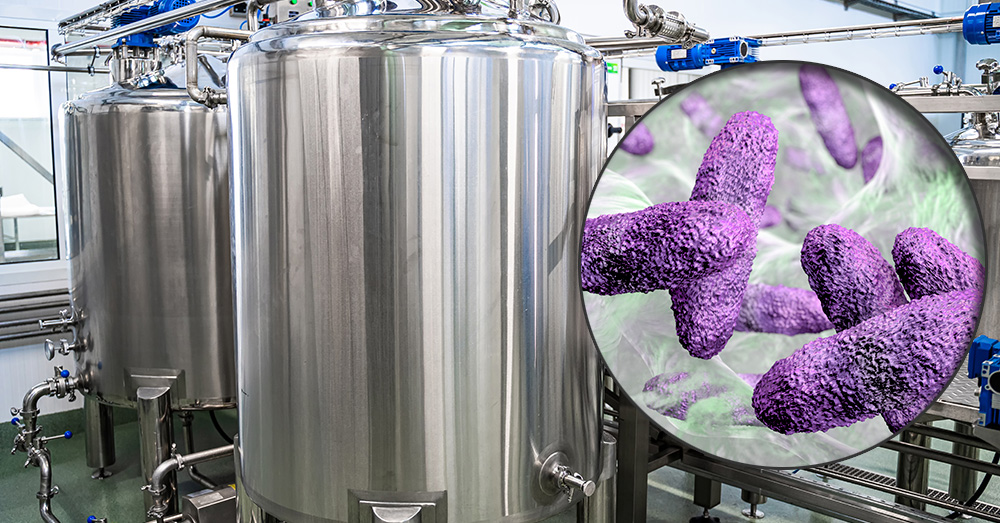Psychrotrophic Bacteria in Pasteurized Milk—Spoilage, Testing, and Line Sampling
Bacteria in pasteurized milk is the leading cause of spoilage and reducing shelf-life. Refer to my earlier posts, How Bacterial Generation Times Impact Fluid Milk Quality and Shelf-life and Heat-Resistant Psychrotrophic Bacteria and Their Effect on the Quality of Pasteurized Milk. In those posts, I discussed the collective efforts of the dairy industry and regulatory involvement in increasing the shelf-life of pasteurized milk.
Monitoring and controlling milk spoilage require the due diligence of a quality control program that includes continuous testing and inline sampling to detect and identify sources of contamination that impact milk quality.
“Estimates indicate that in the United States, approximately a quarter of dairy products are lost at the production level or wasted at the retail or consumer level annually. Premature microbial spoilage of dairy products, including fluid milk, cheese, and cultured products, is a primary contributor to dairy food waste.” (Source: Controlling dairy product spoilage to reduce food loss and waste, N.H. Martin, P.Torres-Frenzel and M.Wiedmann)
Psychrotrophic bacteria in pasteurized milk
Psychrotrophic contamination is the primary reason for the premature spoilage of pasteurized milk. However, these bacteria grow at refrigeration temperatures, and depending on the species, may also survive pasteurization.
The growth rate of the contaminants is the primary factor affecting quality when psychrotrophic bacteria determine shelf-life. Contamination rates as low as a single psychrotrophic bacterium per liter can cause quality defects in pasteurized milk.
Continuous inline sampling and testing must be designed to detect and identify these very low levels of bacterial contamination.
“Pasteurized milk having previously supported growth of psychrotrophs to levels of 5.5logcfuml−1 has been described as having an inferior flavor.” (Source: Encyclopedia of Dairy Sciences)
Three most common types of psychrotrophic bacteria in milk
The three most common types of psychrotrophic bacteria that impact the shelf-life of pasteurized milk by adversely affecting flavor and quality are:
- Gram-negative rods
- Gram-positive cocci
- Gram-positive rods

The first psychrotrophic bacteria are gram-negative rods. Their presence in pasteurized milk is due to post-pasteurization contamination as they generally do not survive the pasteurization process.
They are very psychrotrophic, meaning they proliferate at low refrigeration temperatures. If these bacteria are detected, you can be assured the source is located somewhere in the process after the heating section of the pasteurizer through the packaged product. The presence of gram-negative rods shortens shelf-life by causing bitter, fruity, putrid flavors and ropiness in pasteurized milk.
The second psychrotrophic bacteria are gram-positive cocci. There are two possible environmental contamination sources. First, they may be present in raw milk as thermoduric organisms, meaning they survive pasteurization.
The second origin may be from a post-pasteurization contaminant, such as the condensation in compressed air. Gram-positive cocci are responsible for premature spoilage by causing ropiness or acid souring of the milk.
“Chief sources of thermoduric bacteria in milk are poorly cleaned equipment including old rubber parts, areas of milkstone build-up, separators and other difficult to clean or neglected areas (soil build-up). They may contaminate milk at the farm or at the plant. Poor pre-milking hygiene procedures (e.g., dirty cows) may also influence thermoduric levels in raw milk, especially of spore-formers.” (Source: Basic Dairy Bacteriology, Dairy Foods Science Notes, Cornell University).
The third group of psychrotrophic bacteria is gram-positive rods. They are also thermoduric and most likely originate in raw milk. Their presence shortens shelf-life through bitter flavors and sweet curdling.
The QMI Stress Test for gram-negative bacteria in pasteurized milk
If product testing indicates bacterial counts that are out of specification, a gram-staining procedure is necessary to determine whether the bacteria are gram-negative or gram-positive. This testing can be done by a commercial laboratory or onsite by personnel experienced with the procedures and protocols.
A rapid and effective method to identify sources of gram-negative bacteria is the QMI Stress Test. The easy to administer test provides results within three days to locate low contamination levels of these bacteria.

This test needs to be followed with line sampling (Line Sampling / Post-Pasteurization Contamination (PPC)) and testing to locate the contamination sources within the process. Aseptic and representative sampling applications can help identify psychrotrophic bacteria in pasteurized milk and determine the contamination source. QualiTru’s representative sampling system is approved for use by the Pasteurized Milk Ordinance (PMO). See Regulatory Approvals.
Depending on the type of bacteria identified, sampling and testing for potential sources on the farm and within the plant may be required. The importance of continuous inline sampling and testing, along with packaged product analysis, cannot be overstated in achieving quality and a high level of consumer acceptance.
To learn more, watch our free on-demand webinar, Monitoring Microbial Contamination.




